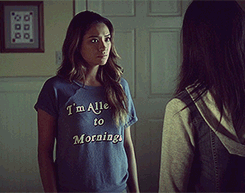By Michelle Favalora
The Hoffman Agency, San Jose
We know that communication means more than just the words we say and the stories we share. Communication happens on a visual level too (hence, the move toward visual storytelling in PR).
So in honor of Valentine’s Day, we thought we’d take a look at the different ways that couples communicate when upset. (Hint: it’s not always about what they say.)
There are a plethora of cues, beyond verbal acknowledgement, that determine a person’s sentiment – whether it be angry, unhappy or otherwise.
So here’s a look at the different types of nonverbal communication, as well as a few tips to ensure that your PR nonverbals align with messaging for your client/company.
- A Change in Demeanor

Image via
The best way to tell something isn’t right with your loved one is to witness a change in behavior. We feel comfortable in the status quo, and if we shift our routine – straying away from our typical behavior – it can be a red flag that something is off.
PR Advice? Always make an effort to be genuine in a media interview. If you act in a way that is unfamiliar (read: erratic), your nonverbals will betray you.
- Facial Expression

Image via
Although you may not think you wear your heart on your sleeve, sometimes there’s no preventing your facial expressions from revealing emotions. Facial expressions are our bodies’ way of showing people what’s going on inside, be it anger, disgust or shock, among others.
PR Advice? While you can’t turn off your ability to feel emotions, you can work to rein in your facial response to an emotionally jarring topic. When confronted with something that upsets you, take a moment to absorb it before you react. That way you don’t betray any “unflattering” sentiments.
- Body Language

When your beloved is upset, he or she will often use closed-off body language, including crossed arms and legs, lack of eye contact and hunched shoulders. An angry person may also take a power stance, taking up as much space as he or she can by standing tall and wide, right before confronting someone.
PR Advice? During an in-person interview, follow the acronym SOFTEN to evoke positive body language:
- Smile
- Open Posture
- Forward Lean
- Touch
- Eye Contact
- Nod
- Tone

Image via
Tone is one of the most betraying nonverbal cues. It can relay anger, frustration or even a lack of interest. A negative tone can often be short, exasperated and dismissive.
PR Advice? While it is perfectly acceptable to provide emotional responses in your interviews, make sure to keep your tone in check – especially when discussing your competition. It is common to discuss competitors in a rude and dismissive manner. To circumvent this, focus on the aspects of your competition that you truly respect so that your commentary and tone remain positive and sincere.
- Touch

Image via
People don’t like to be touched when frustrated or angry because they are trying to shake off unwarranted attempts at consolation. If your partner is keeping to him/herself and avoiding physical contact, it’s a telltale sign that he or she may be mad about something.
PR Advice? Proceed with caution! If you are partaking in a broadcast opportunity, try to read your interviewer’s body language beforehand in regard to personal space, especially to gauge your interviewer’s comfort level with touching. While sometimes touching an arm or shoulder will help gain rapport with the interviewer, other times it makes the interviewer feel uncomfortable. Feel free to err on the safe side, limiting the interaction to a simple handshake.
Whether you are anticipating a nerve-wracking broadcast interview or a confrontation with your perturbed partner, following these tips will help you breeze through your interactions with others.

